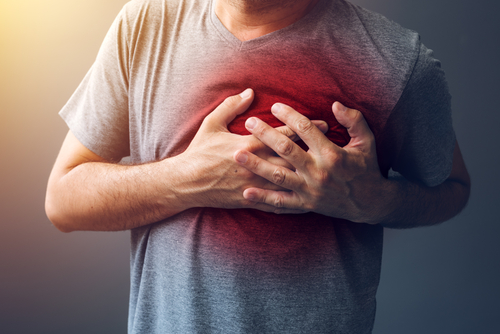Heart Attack: In this video we will discuss why some people do not die even after having a heart attack and how they survive. We will talk about important factors that help save life after a heart attack, such as timely medical assistance, healthy lifestyle, and the body’s natural abilities.
Understanding Why Some People Survive a Heart Attack
A heart attack, medically known as a myocardial infarction, is a serious and potentially life-threatening event caused by the interruption of blood flow to the heart muscle. Despite the gravity of this condition, many people survive heart attacks due to a combination of timely medical intervention, healthy lifestyle choices, and the body’s natural resilience. This comprehensive discussion will delve into these crucial factors, explaining how they contribute to survival and recovery post-heart attack.
1. Timely Medical Assistance
Immediate Response and Emergency Care
One of the most critical factors in surviving a heart attack is the promptness of medical intervention. When symptoms of a heart attack occur, such as chest pain, shortness of breath, or nausea, it is essential to seek emergency medical help immediately. Time is of the essence; the sooner a patient receives treatment, the better their chances of survival and recovery.
Role of Emergency Services
Emergency medical services (EMS) are equipped to provide crucial initial care. Paramedics can administer medications like aspirin or clot busters to dissolve blood clots and restore blood flow to the heart. They also perform life-saving procedures, such as cardiopulmonary resuscitation (CPR) and defibrillation, if necessary. Early intervention by EMS can significantly improve outcomes and increase the likelihood of survival.
Hospital Care and Advanced Treatments
Once the patient reaches the hospital, a range of treatments may be employed to manage the heart attack. These include:
- Medications: Thrombolytics, antiplatelet drugs, and anticoagulants help dissolve clots, prevent new ones from forming, and reduce the heart’s workload.
- Angioplasty and Stenting: A balloon is used to open blocked arteries, and a stent is placed to keep the artery open.
- Coronary Artery Bypass Grafting (CABG): This surgical procedure creates a new pathway for blood flow around blocked arteries.
Timeliness of These Treatments
The effectiveness of these treatments largely depends on their timing. Interventions administered within the first few hours of a heart attack can save the heart muscle from irreversible damage and significantly increase the likelihood of survival.
2. Healthy Lifestyle Choices
Diet and Nutrition
Adopting a heart-healthy diet plays a significant role in recovery and prevention of future heart attacks. A diet rich in fruits, vegetables, whole grains, lean proteins, and healthy fats can help manage cholesterol levels, blood pressure, and overall cardiovascular health. Foods high in omega-3 fatty acids, like fish, and those low in saturated and trans fats contribute to better heart health.
Regular Exercise
Regular physical activity strengthens the heart muscle, improves blood circulation, and helps maintain a healthy weight. Engaging in moderate exercise, such as brisk walking, cycling, or swimming, can lower the risk of subsequent heart attacks and improve overall cardiovascular health.
Avoiding Risk Factors
Eliminating or managing risk factors is crucial for heart attack survivors. This includes:
- Smoking Cessation: Smoking damages blood vessels and increases the risk of coronary artery disease. Quitting smoking is one of the most effective ways to improve heart health.
- Limiting Alcohol Intake: Excessive alcohol consumption can lead to high blood pressure and other heart-related issues. Moderation is key.
- Managing Stress: Chronic stress can negatively impact heart health. Techniques such as mindfulness, meditation, and relaxation exercises can help manage stress levels.
Adherence to Medical Advice
Following the prescribed medication regimen and attending regular follow-up appointments with healthcare providers are essential for long-term heart health. Adhering to these recommendations helps manage conditions like high blood pressure, diabetes, and high cholesterol, which can contribute to heart attacks.
3. The Body’s Natural Resilience
Heart Muscle Regeneration
The heart has a remarkable ability to heal itself to some extent after a heart attack. With proper medical care and lifestyle changes, the heart muscle can gradually recover. The heart’s natural healing process involves repairing damaged tissue and, in some cases, forming new blood vessels to improve blood flow.
Adaptive Mechanisms
Following a heart attack, the body activates various adaptive mechanisms to compensate for the damaged heart tissue. These include:
- Increased Blood Flow: The body can develop collateral circulation, where new blood vessels form to bypass blocked arteries and supply the heart muscle with oxygen-rich blood.
- Improved Efficiency: The remaining healthy heart muscle may become more efficient at pumping blood, compensating for the damaged areas.
Psychological Resilience
The psychological aspect of recovery also plays a vital role. A positive outlook, strong support systems, and mental resilience contribute significantly to the overall recovery process. Engaging in activities that promote emotional well-being can enhance the body’s healing abilities and improve quality of life.
Surviving a heart attack involves a multifaceted approach that combines timely medical intervention, healthy lifestyle choices, and the body’s natural resilience. Immediate medical attention, followed by comprehensive care, can significantly improve the chances of survival and recovery. Maintaining a heart-healthy lifestyle and adhering to medical advice further enhances long-term outcomes. Additionally, the heart’s inherent ability to heal and adapt plays a crucial role in recovery. By understanding and optimizing these factors, individuals can increase their likelihood of surviving a heart attack and leading a healthy, fulfilling life post-event.





